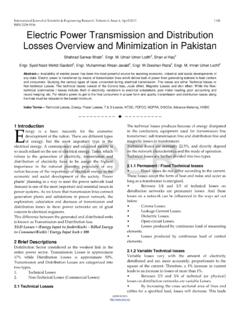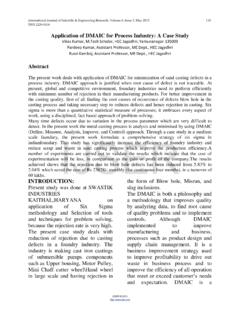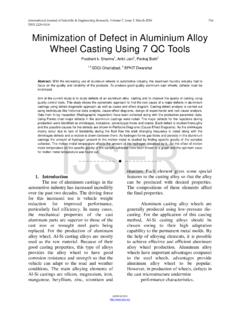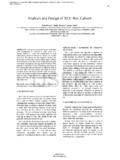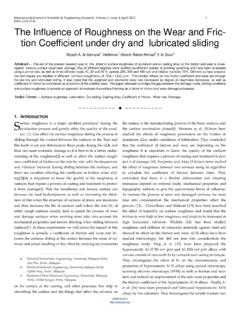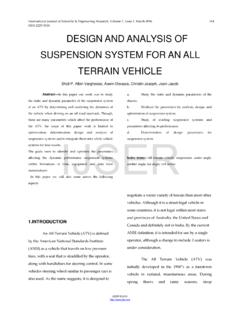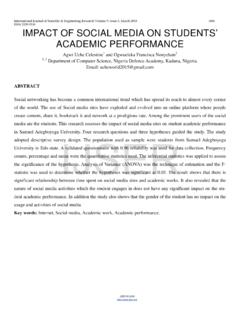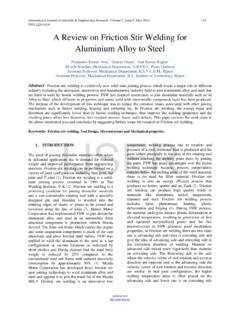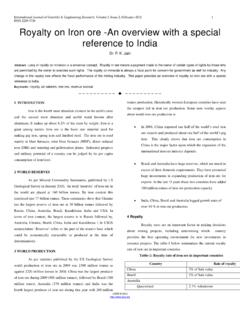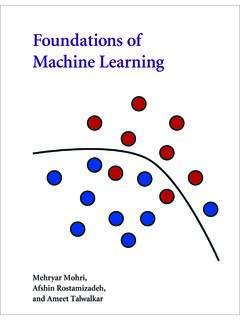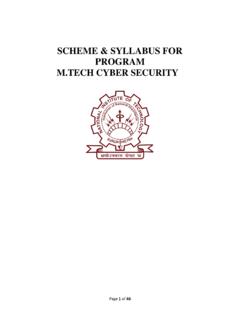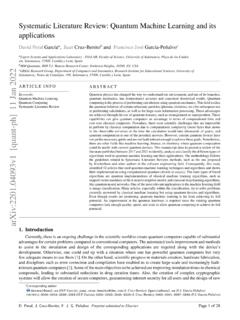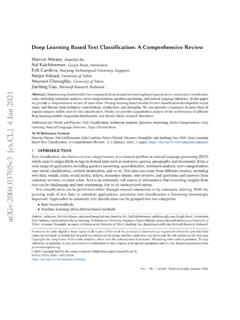Transcription of Predicting Diabetes in Medical Datasets Using Machine ...
1 International Journal of Scientific & Engineering Research Volume 8, Issue 5, May-2017 1538 ISSN 2229-5518 IJSER 2017 Predicting Diabetes in Medical Datasets Using Machine learning Techniques Uswa Ali Zia, Dr. Naeem Khan Abstract-Healthcare industry contains very large and sensitive data and needs to be handled very carefully. Diabetes Mellitus is one of the growing extremely fatal diseases all over the world. Medical professionals want a reliable prediction system to diagnose Diabetes . Different Machine learning techniques are useful for examining the data from diverse perspectives and synopsizing it into valuable information. The accessibility and availability of huge amounts of data will be able to provide us useful knowledge if certain data mining techniques are applied on it.
2 The main goal is to determine new patterns and then to interpret these patterns to deliver significant and useful information for the users. Diabetes contributes to heart disease, kidney disease, nerve damage and blindness. So mining the Diabetes data in efficient way is a crucial concern. The data mining techniques and methods will be discovered to find the appropriate approaches and techniques for efficient classification of Diabetes dataset and in extracting valuable patterns. In this study a Medical bioinformatics analyses has been accomplished to predict the Diabetes . The WEKA software was employed as mining tool for diagnosing Diabetes . The Pima Indian Diabetes database was acquired from UCI repository used for analysis. The dataset was studied and analyzed to build effective model that predict and diagnoses the Diabetes disease.
3 In this study we aim to apply the bootstrapping resampling technique to enhance the accuracy and then applying Na ve Bayes, Decision Trees and k Nearest Neighbors (kNN) and compare their performance. Index Terms- Healthcare, Diabetes , Classification, K-nearest neighbours, Decision Trees, Naive Bayes. 1. INTRODUCTION omputers have brought substantial improvements to technology that lead to the production of massive volumes of data. Additionally, the advancements and innovations in the healthcare database management systems generate a huge number of Medical databases. Healthcare industry contains very large and sensitive data. This data needs to be treated very carefully to get benefitted from it. There is need to develop some more accurate and efficient predictive models that helps in diagnosing a disease although it was revealed that Diabetes mellitus is the diseases which becomes one of the global hazard.
4 Diabetic Mellitus is a set of associated diseases in which the human body is unable to control the quantity of sugar in the blood. It is a group of metabolic diseases which results in high blood sugar level, may be as the body does not produce sufficient insulin, or may because cells do not react to the produced insulin. This disease becomes a global hazard and will increasing rapidly so it is estimated that almost sixty million people from all over the world will be effected by diabetics in 2025. Hence there it is needed to analyses the already available huge diabetic data sets to discover some incredible facts which may help in producing some prediction model. The focus is to develop the prediction models by Using certain Machine learning algorithms.
5 The Machine learning is a sort of artificial intelligence that enables the computers to learn without being explicitly programmed. Machine learning emphases on the development of computer programs that can teach themselves to change and grow when disclosed to new or unseen data. Machine learning algorithms are mostly categorized as being supervised or unsupervised. A supervised learning algorithm uses the past experience to make predictions on new or unseen data while unsupervised algorithms can draw inferences from Datasets . The supervised learning is also called study uses classification technique to produce a more accurate predictive model as it is one of themost commonly applied Machine learning technique that examines the training data and creates an inferred function, which can be used for mapping new or unseen examples.
6 The major goal of the classification technique is to forecast the target class accurately for each case in the data. Classification Algorithms generally require that the classes be defined grounded on the data attribute values. They often define these classes by looking at the characteristics of data already known to belong to class. This process of finding useful information and patterns in data is also called Knowledge Discovery in Databases (KDD) which involves certain phases like Data selection, Pre-processing, Transformation, Classification and Evaluation. Before applying any classification algorithm it is necessary to prepare or preprocess the acquired original dataset to enhance the performance of a classifier. Besides managing the noise and dealing with the missing value, there is a common issue in the real environment Datasets that the target class values are not equal or are not balanced.
7 Several real world application for example Medical diagnoses, fraud detection, network interruption detection, C IJSERI nternational Journal of Scientific & Engineering Research Volume 8, Issue 5, May-2017 1539 ISSN 2229-5518 IJSER 2017 fault monitoring,detection of pollution, biomedical, bioinformatics and remote sensing suffer from these phenomena. This disorder is known as class imbalance. Class imbalance problem recently becoming a hot issueand being examinedby Machine learning and data mining researchers. Besides other major challenges faced by Machine learning and data mining fields, class imbalance is also among one of these challenges. Imbalance data sets reduces the performance of data mining and Machine learning techniques and also affect on the total accuracy and decision making as beinginclined to the majority class, which lead to misclassifying the minority class samples or may handle them as affects prediction accuracy of the classifier.
8 The prediction accuracy in Medical Datasets is generally low while Using conventional classification techniques without applying additional preprocessing or data preparation techniques. One of the solutions is resample for dealing with class imbalance problem. It is a preprocessing method that handles the imbalance problem by creatingalmost balanced training data set and adjusting the preceding distribution for both minority and majority class. Sampling methods compriseof under sampling, over sampling and sometimes hybrid techniques. Under sampling approach will balance the data by eliminatingsamples from majority class whereas the over sampling method will balance the data by creating theduplicates of the present samples or by adding new samples to the minority is one such technique which ensures selection of same sizes of class instances for each type of class we consider resample as one approach to enhance classification accuracy.
9 In this study we have applied bootstrapping method which is a statistical re-sampling technique that allows to randomly replacing different set of data points within a dataset, and hence results in higher accuracy. Resampling methods useby computer to produce a huge amount of simulated samples. Patterns in these samples are then summarized and evaluated. The strengths of Using bootstrap resampling technique are that each sample must have an equal probability of being selected. The simulated samples take full advantage of the information in the sample. Resampling is suggested to be done with replacement. This technique will be simpler and more accurate, needs less assumption, and have better generalizability.
10 Resampling gives particularly rich advantages where expectations of traditional parametric tests are not met, as with minor samples from non-normal distributions. Therefore this technique will help equalizing the minority classes as it aims at obtaining the same size of data points for each class. The efficiency of different classification techniques would be then evaluated to suggest the suitable choice. The classification algorithms have been applied to the PIMA Indians Diabetes Dataset of National Institute of Diabetes and Digestive and Kidney Diseases that contains the data of female diabetic patients. 2. LITERATURE REVIEW Yasodhaet al.[1] uses the classification on diverse types of Datasets that can be accomplished to decide if a person is diabetic or not.
